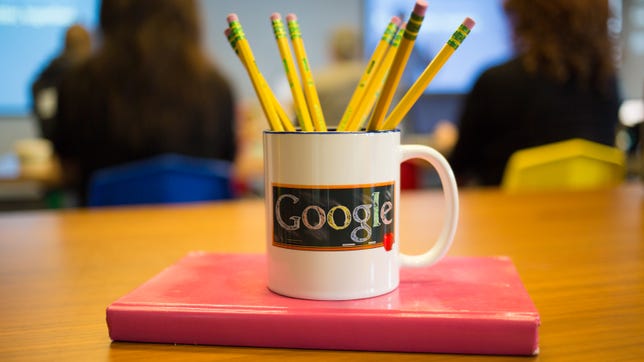
Google’s new productivity features are geared toward students.
James Martin/CNET
SAN FRANCISCO — Google is ready to go back to school.
The search giant has updated its suite of productivity apps with an eye toward helping students with school projects. Changes to the apps, which include word-processing program Google Docs and spreadsheet program Google Sheets, include the addition of voice typing and the ability to more easily see what changes different users have made to a document.
“Google’s mission is to organize the world’s information,” Jonathan Rochelle, director of product management for Google Apps for Education, said Wednesday at a press event here. “That is especially true for students and teachers.”
The changes to Google’s software suite are focused on student collaboration, but you don’t have to be a student to use the tools; there’s no special version of them specifically meant for schools.
The push into classrooms is just another attempt by Google to get its software in as many hands as possible. The tech giant has in the last few years been trying to inject its software into not only smartphones, tablets and desktop computers, but also car dashboards, watches and TVs.
New features in Google Docs for Android — Google’s software that powers smartphones and tablets — include the ability to use Google’s search engine straight from the app, instead of having to leave Docs to browse the Internet. That’s meant to save time. For example, it formerly took 14 clicks — including doing a separate Google search — to insert a photo into a Google Doc, said Ritcha Ranjan a product manager for the software. Now it takes 6.


Google says its Docs updates will save students time.
James Martin/CNET
“You’re not really learning anything by doing these clicks over and over again,” Ranjan said.
Another new feature is voice typing, which lets you dictate text into a document. And a “see new changes” button lets you see who’s made what edits to a document. A feature called “Explore” automatically creates graphs and charts from data on a spreadsheet, so you can analyze and scrutinize that data.
Google has been courting schools for several years. It’s main weapon in the effort has been the Chromebook, a laptop first introduced in 2011, which is powered by Google software and primarily uses the tech giant’s services. The devices have gotten traction in the education market in the United States. In 2014, Chromebooks accounted for about one third of the education market, with a 29.9 percent share. Windows still had the majority, with 39 percent, while Apple had 32 percent, according to IDC.
Outside of schools, though, the Chromebook market share remains small. Of all laptops sold worldwide in 2014, only 3.5 percent were running Google’s Chrome OS, according to research firm IDC. PCs running Microsoft’s Windows software, the market leader, accounted for 86 percent of laptops sold, while Apple’s MacBook notebooks had an 8.7 percent share.
Google also announced a new feature for its Google Classroom software, which is a mission-control-like hub for teachers and students to organize homework assignments and check class rosters. The new feature lets a teacher send content from the Web — like a video or webpage — directly to the screens of every student in their class.




